#wittmoldt
Explore tagged Tumblr posts
Text
The Story of Adrienne (1800) and Pauline (1797)


I often go on and on about how fascinated I am by the time the La Fayette’s and the Noialles’ spend in exile at the estates Wittmoldt and Lehmkuhlen. Many modern books and publications cover this episode only sparsely – and to be honest, at first glance, events like the American and French Revolution for example appear to be the more interesting, more important and more dramatic chapters in La Fayette’s life. I would like to make the point, that the families time in exile should not be underestimated and that many things happen there, that profoundly influenced the La Fayette’s and their kin. This episode is also a fine example of the family interacting with people outside their usual sphere. People from a different country, a different culture, often with different perceptions.
The other day I was reading a book about Wittmoldt, both the Wittmoldt estate as well as the small village by the same name nearby. The book was written by the head teacher of the local school and a large part of his book deals with the school, its pupils and former teachers throughout time. The book mentions a former head teacher, Detlef Ludwig Petersen, who lived at the Wittmoldt estate during a time where Wittmoldt had many different owners and inhabitants – Madame de Tessé, Adrienne de La Fayette’s aunt, among them.
Now, what is so special about Petersen? He and his wife had four children. Three of them were born in Güsdorf, a neighbouring village, before the Petersen’s moved to Wittmoldt. While living at the Wittmoldt estate they had one last child, a daughter named Adrienne Pauline. My interest was immediately peaked since the name was not only very French – in contrast to the very German names of the first three children, but also the names of the French inhabitants of Wittmoldt at the time.
La Fayette’s wife and her aunt were both named Adrienne and there was also a younger sister, La Fayette’s sister-in-law, who stayed at Wittmoldt and that was named Pauline. This could hardly be a coincidence! I had a look at the archival records and found the entry of Adrienne Pauline’s baptism.
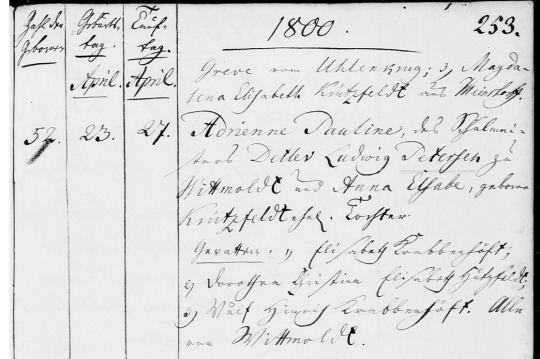
Landeskirchliches Archiv der Evang.-Luth. Kirche, Kirchenkreis Plön-Segeberg, Plön, Taufen 1764-1800, p. 247.
The child was born on April 23, 1800 and baptised four days later on April 27.
But wait! That is not all!
While going through the records, I found a second child with a name too extraordinary to be a coincidence.
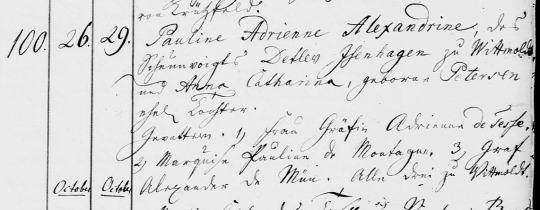
Landeskirchliches Archiv der Evang.-Luth. Kirche, Kirchenkreis Plön-Segeberg, Plön, Taufen 1764-1800, p. 203.
Pauline Adrienne Alexandrine was born on September 23, 1797, and baptised on September 29. Not only is her name a direct reference to the two sisters and their aunt, but the record also reveals that both Madame de Tessé, as well as Pauline, Marquise de Montague were witnesses to the proceedings.
The name of Pauline Adrienne Alexandrine’s father does not ring a bell for me, but her mother’s maiden name was Petersen. Now, Petersen is and always has been a very, very common German surname and therefor this could be two different Petersen-families. But Wittmoldt is still a very small village with few inhabitants and things were not looking any different at the turn of the 19th century. It is therefore entirely possible (and in my opinion quite likely) that not one, but two couples in the Petersen-family decided to name their daughter after Adrienne and Pauline.
(I think that the Adrienne, Madame de Tessé, played a bigger role here then Adrienne, Marquise de La Fayette since de Tessé owned Wittmoldt, lived there longer than her niece and was directly referred by name in the records of the 1797 baptism.)
This might not be a big and flashy story compared with some of La Fayette’s exploits during the American Revolution for example, but I like to believe that this is a very human story. The little things, the silent connections that speak of respect and intimate relationships - stories that are history without making history.
#marquis de lafayette#resources#la fayette#lafayette#french history#american history#history#french revolution#madame de tessé#pauline marquise de montague#1797#1800#detlef ludwing petersen#wittmoldt#lafayette in exile
18 notes
·
View notes
Photo
Ah, Saintes. How I wish I was back there, back in the olden days when the Au croissant doré still existed and I would eat their home made quiche on that one (1) specific park bench on Rue Georges Clemenceau between the Sous-Préfecture and the Cathédrale Saint-Pierre, being not exactly watched by the head- and torso-less statue of Louis IX, commemorating the French victory over the English in 1242...
Not knowing that one day, @nordleuchten and I would wonder about a certain Abbé Jean-Louis-André de Luchet archdeacon of St. Pierre, and where in the name of [insert strong exclamation of your choice here] he put any scrap of written proof of the marriage ceremony he performed in Wittmoldt, modern-day Schleswig-Holstein on 9 May 1798....

The Ancient Roman Arch of Germanicus, built 18 or 19, in Saintes, France.
Photo courtesy & taken by Propre travail.
494 notes
·
View notes
Note
Hello! Do you by any chance know where Lafayette and his family lived after they were released from Olmütz, and waiting to go back to France?
Dear @mxtallmadge,
yes, I do know by chance where the La Fayette’s stayed in exile before returning to France. Thank you for the question, this is actually one of my favourite episodes in La Fayette’s life.
They first went to a place called Gut Wittmoldt (the family often used slightly different spellings) that was located on the banks of the Plöner See. Madame de Tessé, Adrienne’s aunt, had rented the property and several emigrees lived there or in the surround area. La Fayette’s daughter Virginie wrote in her book:
At last on the 10th of October 1797 we arrived at Witmold a property Mme de Tessé had bought in a peninsula on lake Ploën. (…) At Witmold, my mother recovered her strength, and found repose of body and mind. My father found his friends. He was fond of Mme de Tessé, and had with her on every point complete community of opinions. His political life had met with her constant approbation, and you may fancy what charm five years of silence at Olmütz added to Mme de Tessé’s lively, animated and piquante conversation.
Mme de Lasteyrie, Life of Madame de Lafayette, L. Techener, London, 1872, pp. 372-373.
For the winter months of 1797/98, La Fayette rented Gut Lehmkuhlen, close by Wittmold. There were several reasons for the move. The family wanted to have a place of their own – and not everybody was as much in perfect agreement with La Fayette’s political opinions and actions as Madame de Tessé was. Virginie wrote:
Mme de Maisonneuve came to see her brother and joined us at Lhemkulen, a large castle in Holstein, near Witmold, which my father had hired for the winter. Shortly afterwards my brother arrived from Mount Vernon. Under General Washington’s paternal care he had become a man. My mother was happy and so were her children.
Mme de Lasteyrie, Life of Madame de Lafayette, L. Techener, London, 1872, p. 374.
After the winter months, the family moved back to Wittmoldt. It was then and there that Anastasie married. After the wedding, the family moved to Vianen, near Utrecht. Again turning to Virginie:
After a short stay there [Paris], and a visit to Mme de Chavaniac in Auvergne, we all met again in the following year 1799 at Vianen, near Utrecht. My father had come there from Holstein, with George. Exiles can fix themselves nowhere. Their only thought is to abandon their momentary home, their only wish to depart.
Mme de Lasteyrie, Life of Madame de Lafayette, L. Techener, London, 1872, p. 377.
Adrienne and Virginie had been in Paris and in the Auvergne, while La Fayette, Georges and Anastasie, now pregnant, had moved directly to Vianen. Adrienne and Virginie followed them there.
Gut Wittmoldt and Gut Lehmkuhlen were in a region that was then known as Danish Holstein. The region was very interesting from a cultural and social aspect, and it became the refuge for many French exiles. The region is today part of Northern Germany.
Vianen is a city in the Netherlands. By the time of the La Fayette’s settlement there, it belonged to the Batavian Republic.
I have made a detailed post about the La Fayette’s home in Vianen here.
I have no specific posts about either Wittmoldt or Lehmkuhlen – what is slightly ironic because I am very often in that area and have visited Wittmoldt especially quite often, but I never took any pictures.
Lehmkuhlen has, rather recently, been turned into a biogas plant but the gardens of the former estate have been preserved.
Wittmoldt is still owned by the same family and on their website they even advertise with the fact that La Fayette and his family stayed on their property. Today, the estate hosts many cultural events like concerts, workshops and art and craft markets. They also offer Equine-assisted therapy. Furthermore, Gut Wittmoldt can be rented for weddings or the like (the chapel where Anastasie married is no longer standing). Several of the buildings on the property have also been turned into guesthouses for tourists. Most modern buildings in Wittmoldt are from the 1860’s but there is at least the old bakehouse from the early 1790’s that La Fayette would have known and that also had been turned into a guesthouse.
I hope the information was helpful. I have a la fayette in exile-tag, that might interest you as well. I hope you have/had a lovely day!
#ask me anything#mxtallmadge#la fayette in exile#marquis de lafayette#la fayette#french history#american history#french revolution#history#1797#1798#wittmoldt#lehmkuhlen#anastasie de la fayette#virginie de la fayette#georges de la fayette#adrienne de la fayette#adrienne de noailles#vianen
14 notes
·
View notes
Text
The man who hated La Fayette
I really struggled t find a fitting title for this post because I need you to read this letter! It is absolutely hilarious!
While in exile after the French Revolution and his time in prison, La Fayette and his family settled in Holstein in what was then Denmark on the country mansion Gut Wittmoldt. They were in contact with many of the local aristocracy. One family that was especially influential in that region at that time was the von Reventlow family. Now, I made a post in the past that not all of the von Reventlow’s were the biggest fans of La Fayette – I know Countess Frederike Juliane’s “this man” letter made not only me laugh. But now I found the one letter to rule them all.
Charles Claude d’Angiviller himself a French Émigrés, had settled in Holstein and was in contact with the von Reventlow’s. he even lived at their country estate Gut Emkendorf for some time. In 1798 he wrote a letter to Countess Frederike Juliane about her meeting the Marquis de La Fayette. I had to highlight the best part.
Eh bien! vous avez donc vu le froid, insipide et glacial Heros des deux mondes plus justement intitulé Gille César par le Duc de Choiseul? mot plaisant qui me semble le peindre parfaitement, car il s’est toujours présenté fierement à tous les événements, pour s’y conduire sans talent avec une insolence niaise et en sortir avec honte. Je doute d’ailleurs qu’au delà de la curiosité de la réputation appliquée sur le personage il vous ait infiniment satisfait, car toutes les fois qu’il a été dans le cas de parler, il auroit été au defrons de rien sans l’impudence d’immoralité qui a servi d’eclat à deux ou trois de ses mots, tels que l’insurrection est le plus saint des devoirs. Je crois que sa prison l’a conservé un grand-homme, comme ces fétus que l’on conserve dans l’esprit de vin. Je pense encore que la principale de ses qualités, qualité rare, et bien plus rare qu’on ne croit encore, est une sorte de ténacité et de suite dans la même idée qui fait qu’on veut, et ce qui est plus rare encore: qu’on veut longtems la mesme chose. Au reste ce n’est point une ame libre et indépendante, c’est un ambitieux hipocrite (…).
My translation:
Well then! you have seen the cold, insipid and icy Heros of the Two Worlds, more aptly named Gille César by the Duc de Choiseul? a pleasant word which seems to me to describe him perfectly, for he has always proudly presented himself at all events, only to conduct himself without talent, with foolish insolence and to leave with shame. I doubt, moreover, that beyond the curiosity of the reputation applied to the personage, he has greatly satisfied you, for every time he has been in a position to speak, he would have been a fool if it hadn't been for the impudent immorality of two or three of his words, such as insurrection is the holiest of duties. [d’Angiviller referenced the following quote of La Fayette here: “When the government violates the people's rights, insurrection is, for the people and for each portion of the people, the most sacred of the rights and the most indispensible of duties.”] I think that his prison kept him a great man, like those fetuses that are preserved in the spirit of wine. I also think that his main quality, a rare quality, and much rarer than we think, is a kind of tenacity and continuity of the same idea that makes one want, and what is rarer still: that one want the same thing for a long time. Besides, he is not a free and independent soul, he is an ambitious hypocrite (...).
I personally lost it at the point where d’Angiviller compared La Fayette with a preserved fetus ... this is an insult even I have not seen before.
But as seething as this letter is, I can not bring myself to completely disagree with d’Angiviller. In fact, I completely agree with him, that La Fayette’s imprisonment almost certainly helped his status and reputation in the long run. This came at an awfully high price, but it did help. Furthermore, d’Angiviller, mentions that La Fayette’s talent was to be persistent, to want the same thing for a very long time. I agree with that as well. Moreso, many of La Fayette contemporaries seemed to agree with this statement. One of my favourite quotes about La Fayette is about him having blinders. French writer, politician and historian François-René, vicomte de Chateaubriand, a contemporary of La Fayette and himself an ardent royalist wrote:
M. de Lafayette had one idea only; luckily for him, it was that of the century. The fixity of this idea gave him a kingdom; it served him as a pair of blinders; it stopped him from looking to the right and left; he walked a straight line with a firm step; he went forward without falling into the precipice, not because he could see it, but because he didn’t; blindness served him as genius might have.
While this statement varies greatly form d’Angiviller letter, I find it interesting to see that still the same idea, the same in perception in different statement, made by people with differing opinions about the same person.
#marquis de lafayette#la fayette#lafayette#french history#french revolution#charles claude d'angiviller#frederike juliane von reventlow#letters#1798#lafayette in exile#gut wittmoldt#gut emkendorf#danish history#european history
23 notes
·
View notes
Note
What do you think the best biography on Lafayette is? I’ve read the ones by Mike Duncan, Laura Auricchio, and Jason Lane (and of course Laf’s own memoirs!). I know of the Harlow Giles Unger one but just haven’t gotten my hands on it.
Dear Anon,
that is a good question, actually. It normally depends on the question that you want to get an answer to. The books by Harlow Giles Unger (Lafayette) and Mike Duncan (The Hero of Two Worlds) are probably the most “general” biographies out there at the moment. Other books put a bit more focus on a specific topic, like La Fayette’s relationship to George Washington and America, his involvement in the French Revolution, his time in prison and exile or his political agenda in the 1820s and 30s.
That aside, my favourite is probably For Liberty and Glory by James R. Gains. That was my third (or so) book on La Fayette and I really enjoyed it and like to pick it up again from time to time. I also liked The Marquis: Lafayette Reconsidered, the book by Laura Auricchio that you mentioned. Another good one (but only available in German) is General Lafayette in Wittmoldt: ein Leben für die Freiheit by Alfons Galette.
There are many good books about La Fayette and for me personally, in order to stand out, a book needs to have something special, like some new insights or an interesting research focus. But in the end it depends on what you “want” from the book.
I hope you have/had a wonderful day!
#ask me anything#anon#resouces#books#mike duncan#harlow giles unger#james r gains#alfons galette#laura aurcchio#marquis de lafayette#la fayette#lafayette#french history#american history#history#american revolution#french revolution
14 notes
·
View notes
Text
@nicobutnot wrote:
Do you know any accurate books about laurens, Lafayette or hamilton?
I am sorry that it took me so long to answer your question, but I thought that it might be more appropriate to turn this answer into a proper post, because that way I can elaborate a bit more and other people, who might have the same question, might see this as well.
I am no expert when it comes to good books about Laurens and Hamilton – so whoever knows more, please feel free to add to this post. With regards to La Fayette, the answer depends a bit on what you are looking for.
General Books:
Hero of two Worlds by Mike Duncan and Lafayette by Harlow Giles Unger are good and comprehensive overviews about La Fayette’s life from cradle to grave. Unger has a few more information and Duncan gives better sources and is more neutral, if you were to ask me, but both books are good starting points.
Then there also the books written by Louis Gottschalk – he was and likely still is *the* authority on La Fayette. He published a multi-volume work detailing his life as well as numerous papers and books about smaller, more specific aspects. He was also one of the driving forces behind the publication of La Fayette’s letters and papers.
Books that still give a general overview but also bring a new perspective/focus on a specific topic:
In this very roundabout named category, I can recommend For Liberty and Glory by James R. Gaines (one of my personal favourites), a book about La Fayette’s and Washington’s relationship, and their different approaches to Revolution. I can also recommend The Marquis – Lafayette Reconsidered by Laura Auricchio for a fresh and new perspective.
Niche books:
In Lafayette in Two Worlds by Lloyd S. Kramer we have a wonderful contextualization of La Fayette role in politics, especially during the time of the French Revolution, his self-presentation, and a careful analysis of the image he crafted for himself.
Lafayette: Prisoner of State by Paul S. Spalding takes an in-depth look into La Fayette’s time imprisoned by Prussia and Austria during the French Revolution.
General Layette in Wittmoldt by Alfons Galotte has never been translated into English as far as I know but if you can read German; it is a wonderful reflection on La Fayette’s time in exile in Danish-Holstein. The book does not only sheds light on the La Fayette family but also on the people around them, the political and social world their were moving in and how people perceived them.
I hope I could help with that aspect and happy reading! :-)
#nicobutnot#marquis de lafayette#la fayette#french history#american history#american revolution#french revolution#history#books#resources
29 notes
·
View notes
Text
The Baptism of Adrienne Pauline Stéphanie de Montague-Beaune
In continuance of my quest to find Anastasie’s marriage certificate, I found something else. The sister of Anastasie’s mother Adrienne, Anne-Paule-Dominique, Marquise de Montague, was with the La Fayette’s in exile in Wittmoldt and it was there she gave birth to baby girl on May 19, 1798:

Landeskirchliches Archiv der Evang.-Luth. Kirche, Kirchenkreis Plön-Segeberg, Plön, Namensregister Taufen 1782-1800, p. 489.
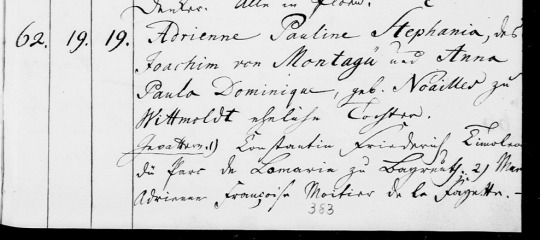

Landeskirchliches Archiv der Evang.-Luth. Kirche, Kirchenkreis Plön-Segeberg, Plön, Taufen 1764-1800, pp. 187-188.
I am not quite sure who the first godfather is, but Adrienne, the baby’s aunt, and Anatsasie, the baby’s cousin, were godmothers for the infant.
We can see that Stéphanie was baptized on the day of her birth while the other entries in the parish register indicate that most children were baptized at least three to four days after their birth, thus giving family time to gather and the mother some time to recover. The fact that Stéphanie was baptized on her birthday could indicate that she was a sickly child and/or that the birth had not gone smoothly and thus the family decided to get her baptized as quickly as possible in case she was to die young. It could just as well have been a matter of personal preference or logistical necessity.
#marquis de lafayette#la fayette#french history#history#french revolution#1798#anastasie de la fayette#adrienne de lafayette#adrienne de noailles#anne paule dominique#marquise de montague#adrienne pauline stéphanie de montague-beaune#plön#handwriting#la fayette in exile
11 notes
·
View notes
Text
La Fayette and the "Emkendorfer Kreis"
The Emkendorfer Kreis (the Emkendorf Circle) was a Danish-German intellectual society that focused mainly on literature, music and theological discussions. It was formed around Friederike Juliane Gräfin von Reventlow (Countess of Reventlow, pictured below.) The circle counted such luminaires like Matthias Claudius, Friedrich Gottlieb Klopstock, Matthias Claudius, Heinrich Christian Boie, Johann Heinrich Voß and Friedrich Heinrich Jacobi as its members. It was sometimes also referred to as the Weimar des Nordes (the Weimar of the North.)

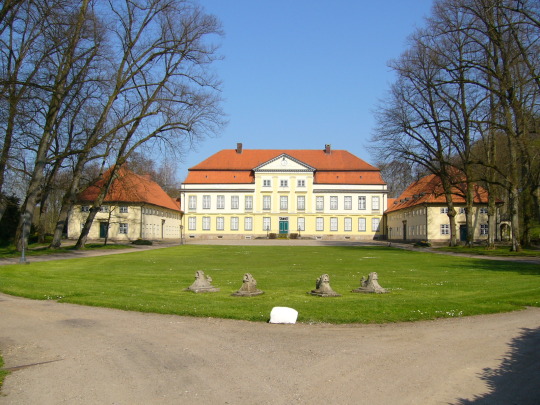
The name of the group derived from the manor “Emkendorf” (pictured above) that was and to this day still is owned by the von Reventlow family. The von Reventlow family is a noble family with great influence in both Denmark and Germany. Several members of the family were diplomats and held high offices while also having significant influence on the academic and artistic landscape of their day. Although the influence of the family has diminished over the last two centuries, the family still has considerable holdings in northern Germany, is well connected and engaged in local politics. Gut Emkendorf in particular is often the venue for cultural or musical presentations, special markets were craftspeople can sell their goods as well as guided tours that touch on the regional as well as on the family history.
Gut Wittmold and Gut Lehmkuhlen, the two mansions where La Fayette and his family stayed during their exile in Danish-Holstein, are close by and the La Fayette’s as well as friends and other family members were guests at Gut Emkendorf and occasionally present when the Emkendorfer Kreis met. The relationship between the von Reventlow's and the La Fayette’s in particular was rather cold and reserved. I wrote in this post here about Friederike Juliane’s opinion on Adrienne and her sister Pauline, but there was far more to the matter.
Überhaupt hat der Aufenthalt all dieser Fremdlinge in Emkendorf dazu beigetragen, sich über die Ereignisse der Französischen Revolution genauer zu unterrichten, keineswegs aber das Urteil darüber zu mildern. Hier, wo ohnehin die alte ständische Gliederung als einzig wahre Staatsform betrachtet und deutscher Geisteskultur der Vorrang vor jeder anderen, besonders der französischen, gegeben wurde, konnten jene liberalen französischen Royalisten bei allem Mitgefühl für ihr Schicksal doch nicht auf volle Übereinstimmung mit ihren Zielen rechnen. Ein Mann wie Lafayette, der Holstein ebenfalls zu seinem Asyl für kurze Zeit erkor, ist in Emkendorf als unmittelbarer Mitschuldiger an den blutigen Anfängen der Revolution mit eisiger Kälte empfangen und wieder entlassen worden (…)
Otto Brandt, Geistesleben und Politik in Schleswig-Holstein um die Wende des 18. Jahrhunderts, Outlook Verlag GmbH, Frankfurt, 2022, original reprint from 1925, pp. 150-151.
My translation:
In general, the stay of all these foreigners in Emkendorf helped the people in Emkendorf to learn more about the events of the French Revolution, but in no way did it softened their judgment. Here, where the old system of goverment was regarded as the only true form of government and German intellectual culture was given priority over any other, especially French intellectual culture, those liberal French royalists, with all the sympathy for their fate, could not count on full agreement with their ideals. A man like Lafayette, who also chose Holstein as his asylum for a short time, was received in Emkendorf, as a direct accomplice in the bloody beginnings of the revolution, with icy coldness (...)
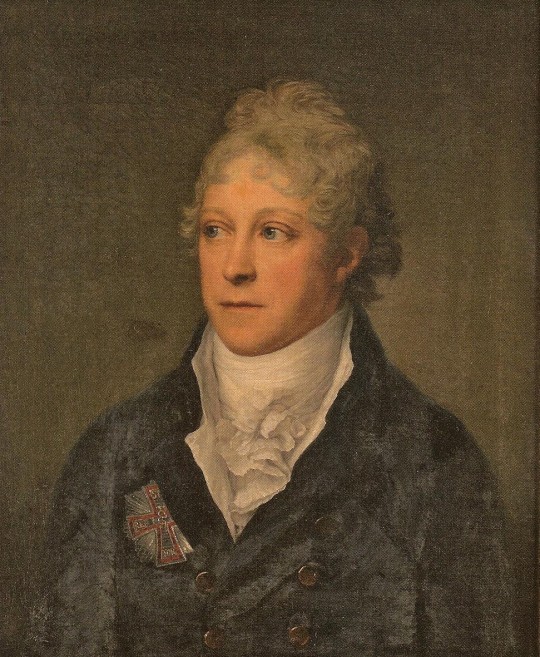

The next passage partly quotes a letter from Friedrich “Fritz“ Karl Graf von Reventlow (left, Friederike Juliane’s husband) to his brother Cay Friedrich Graf von Reventlow (right) from June 1, 1798
Übrigens war man in Emkendorf überzeugt, dass Lafayette bei „seinem stillen und eingezogenen Wesen“ sich nicht „als Werkzeug brauchen lasse“ und nicht „kleine niedrige Künste und Ränke“ anwende um „den Geist der Revolution auch im Norden zu erregen“.
Otto Brandt, Geistesleben und Politik in Schleswig-Holstein um die Wende des 18. Jahrhunderts, Outlook Verlag GmbH, Frankfurt, 2022, original reprint from 1925, pp. 151.
My translation:
People in Emkendorf were convinced that Lafayette, with “his quiet and withdrawn nature”, would not let anyone “use him as a tool” and would not use “small low arts and intrigues” to “excite the spirit of the revolution in the north as well”.
While I myself always like to point out that La Fayette was far more than the bubbly teenager, he is often made out to be, I find it nevertheless quite remarkable that La Fayette is described here as “quite and withdrawn”. It shows once more that the last years had been a living nightmare for him and his family.
#marquis de lafayette#la fayette#la fayette in exile#wittmoldt#lehmkuhlen#emkendorf#french history#history#french revolution#letter#1798#german history#danish history#friederike juliane gräfin von reventlow#von reventlow#cay friedrich graf von reventlow#friedrich “fritz” karl graf von reventlow#adrienne de lafayette#adrienne de noailles#pauline de noailles#matthias claudius#Matthias Claudius#friedrich gottlieb klopstock#heinrich christian boie#johann heinrich voß#friedrich heinrich jacobi#emkendorfer kreis
29 notes
·
View notes
Text
La Fayette in Vianen
I stumbled over a very interesting Dutch article titled “La Fayette en Vianen” the other day and decided to do some research. I always wanted to know where exactly La Fayette and his family stayed while they lived in exile in Vianen (modern day Netherlands). Since most books brush over the family’s time in the Dutch village, I had to do my own digging.
First, a little run-down. After being released from the prison in Olmütz, La Fayette, Adrienne and their daughters settled in Wittmold and Lehmkuhlen in the neutral Danish-Holstein (modern day Germany.) Adrienne’s aunt Madame de Tessé had rented the Gut Wittmold and the region was a place many exiles choose to settlein. It was here that the La Fayette’s were reunited with their son and brother Georges who had spent the last years in America. La Fayette’s oldest living daughter Anastasie married while in Wittmold but tensions rose with time. Adrienne returned with her daughter Virginie to France to regain some of the family’s fortune. Anastasie, now pregnant, and her husband went to Vianen and settled there. Their twin daughters would be born and baptized there. The archive in Utrecht holds the baptism record. Adrienne meanwhile managed to obtain a passport that allowed La Fayette to travel to Vianen as well. The whole family was again reunited in Vianen in 1799.
Vianen was at that point in time part of the Batavian Republic. The Batavian Republic was the successor of the Republic of the Seven Netherlands/United Provinces of the Netherlands. Its formation on January 19, 1795 was heavily influenced by French revolutionary troops but the reform of government was desired by the Dutch people. The Republic became the Dutch Commonwealth in 1801 and was later abolished on June 5, 1806 when Napoléon’s brother Louis Bonaparte was crowned King of Holland. The Batavian Republic was the first of Frances “sister-republics” and later part of the French Empire. The Batavian Republic was organized in different Departments. This map from 1798 shows the order La Fayette would have found in 1799. Utrecht is located in the North-east of the Department van de Rijn:
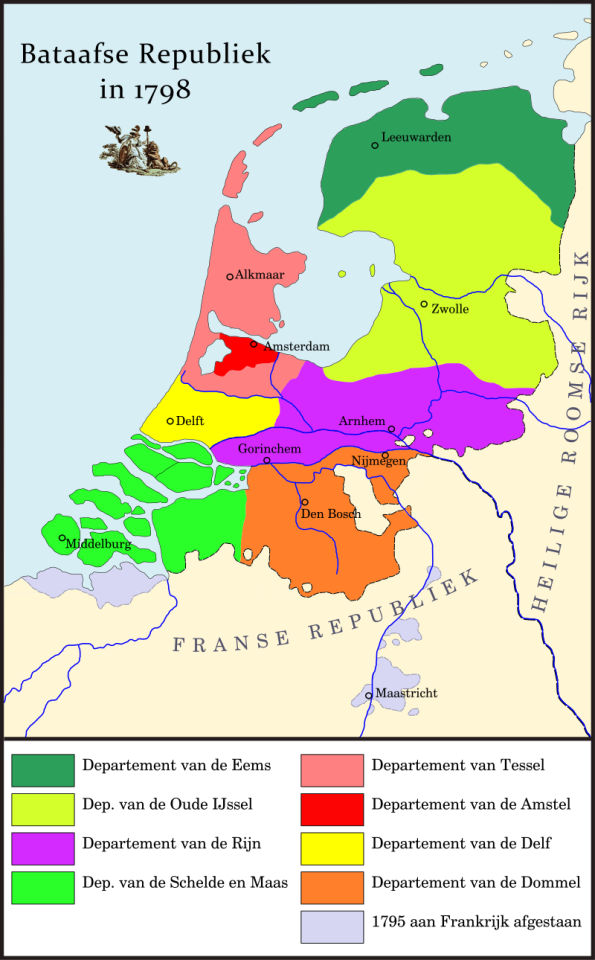
Utrecht would become its own department in 1801:
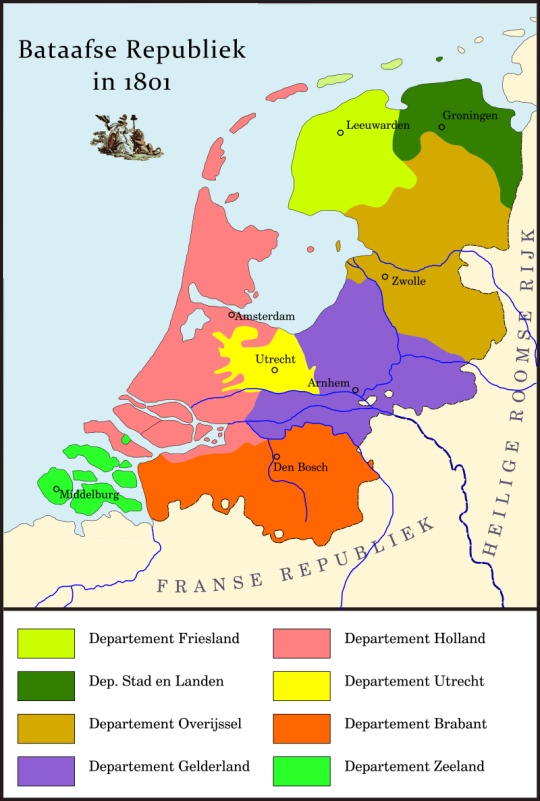
With that all being said, we can move on to La Fayette’s address. He lived in the county house (buitenplaats) Buitenlust (I have a hard time finding a suitable English translation, but buitenlust describes the joy of the outdoors) in the Prinses Julianastraat. (princess Juliana street) The house was erected in 1770 for Jacob Cambier and demolished in 1901. Buitenlust was composed of two stories on a rectangular piece of land. A picture of Buitenlust adorns an old postcard from Vianen.
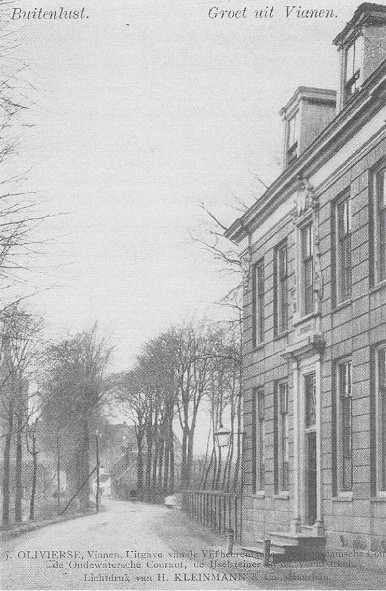
Piet de Hertog, De Prinses Julianastraat, geschiedenis en verdwenen verbouwing, in Het Land Van Brederode – Jaarboek 2013, 2013, pp. 16-25.
After Cambier’s death in 1783, the ownership passed to his son Joan Jacob Cambier. It was he who rented the house to La Fayette and his family.
While the neighborhood has severely changed over the last decades, there is still something left of the original Buitenlust. In 1939 a new building, a single family home, was erected on the grounds of the old country house. The house has a gable stone marked with the word “Buitenlust". The address today is Prinses Juliananstraat 26 in Vianen.
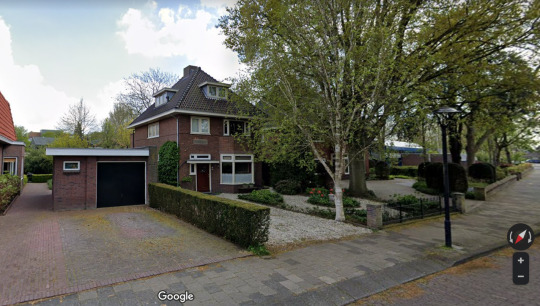
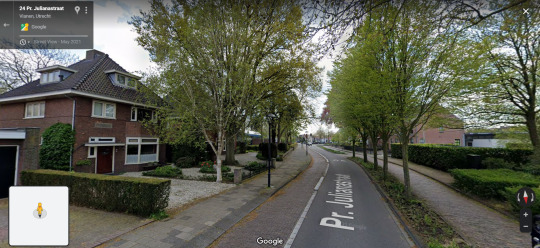
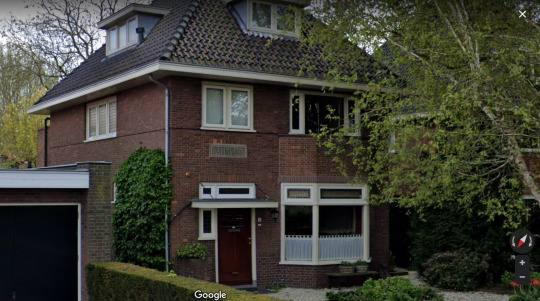
La Fayette’s connecttion with Vianen, Buitenlust and the Cambier family was further explored in the article De Prinses Julianastraat, geschiedenis en verdwenen verbouwing, published by the historical society Het Land Van Brederode:
De bouwheer van Buitenlust was Jacob III Cambier (1711-1783), éen van de Viaanse vooraanstaande Patriotten. Jacobs contacten met de Fransen leidden er tie dat de bekende politicus en generaal Gilbert du Motier, markies De Lafayette (1757-1834) op Buitenlust onderdak vond. Lafayette kende een turbulente politieke carrière en mocht na zijn vrijlating uit oostenrijikde gevangenschap niet naar frankrijk terugkeren. De markies werd vooral bekend door zijn strijd tegen de Englesen in de Amerikaanse vrijheidsoorlog. De deatilas en de betrouwbaarheid van zijn verblijf in Vianen zijn niet exact bekend, maar he is een feit dat De Lafayette in 1799 in Vianen verbleef. Dat volgt namelijk uit een brief die hij vanuit Vianen schreef aan George Washingon. Van de eigenaarsgeschiedenis van Buitenlust zijn slechts flarden bekend. De laaste bewonder van Buitenlust was Willem Jacob II Cambier (1844-1901), secretaris penningmeester van het hoogheermraadschap de of. Na zijn overlijden werd het huis nog in datzelfde jaar abgebroken.
Piet de Hertog, De Prinses Julianastraat, geschiedenis en verdwenen verbouwing, in Het Land Van Brederode – Jaarboek 2013, 2013, pp. 16-25.
My translation:
The builder of Buitenlust was Jacob III Cambier (1711-1783), one of Vianen’s foremost patriots. Jacob’s contact with the French lead to the prominent politician and General Gilbert du Motier, marquis De Lafayette (1757-1834) finding shelter in Buitenlust. Lafayette’s political career had been turbulent, and he was not allowed to return to France after his release from Austrian imprisonment. The marquis was most famous for his fight against England in the American War of Independent. The details of Lafayette’s stay in Vianen are not completely certain, but it is known that he was in Vianen in 1799. This is primarily proven by a letter that he had send to George Washington from Vianen.
The last resident of Buitenlust was Willem Jacob II Cambier (1844-1901), secretary of the treasury for the council of Vijfheerenlanden [a municipality in the province of Utrecht.] After his death, the house was demolished the same year.
The article is wrong in one aspect; there is more than one letter to prove that La Fayette was in Vianen. There is one letter to Thomas Jefferson from April 19, 1799 and one to George Washington from May 9, 1799. Then there is also the letter from Wiliam Vans Murray to John Quincy Adams from March 19, 1799. Murray had visited La Fayette and his family in Vianen and was fairly shocked by what he witnessed there. We furthermore have several legal documents in the archive in Utrecht as well as this except from Virginie’s book:
After a short stay there [Paris], and a visit to Mme de Chavaniac in Auvergne, we all met again in the following year (1799) at Vianen, near Utrecht. My father had come there from Holstein, with George. Exiles can fix themselves nowhere. Their only thought is to abandon their momentary home, their only wish, to depart. It was there that my sister gave birth to her first child, and that my aunts came to see us.
Mme de Lasteyrie, Life of Madame de Lafayette, L. Techener, London, 1872, p. 377.
#la fayette in exile#la fayette#adrienne de lafayette#adrienne de noailles#virginie de lafayette#anastasie de lafayette#georges de lafayette#french history#french revolution#american history#founders online#letters#1799#vianen#utrecht#batavian republic#wittmoldt#thomas jefferson#george washington#john quincy adams#wiliam vans murray#history#marquis de lafayette#buitenlust#google maps
29 notes
·
View notes
Text
"Now give three cheers, I'll lead the way"
Heartfelt congratulations to La Fayette’s oldest daughter Anastasie who celebrates her 224th wedding anniversary today. 🥳🥳
#anastasie de lafayette#juste-charles de fay de la tour-maubourg#history#humour#1798#on this day in history#wittmoldt#hms pinafore#french history#wedding anniversary
21 notes
·
View notes
Note
DID LAFAYETTE RELLY LIVE IN HAMBURG?! MY PARENTS JUST TOLD ME THAT HE LIVED IN HAMBURG AT SOME POINT AND I'M REALLY EXCITED ABOUT IT BUT IS IT TRUE?!
I'm so sorry I can't make a proper sentence in English right now I'm just so excited! Is it really true? Thank you so much!
Never fear @sophia-daria,
I can relate to your excitement. I made an almost identical discovery the night before my A-Levels.
The short answer is no, La Fayette never lived in Hamburg. He stayed there however for two days. After La Fayette, his wife and children as well as his fellow inmates were released from the prison in Olmütz, they were escorted by an Austrian Major all the way to Hamburg were they were delivered into the hands of the American consul in Hamburg, John Perish. The family stayed two days in Hamburg. Here is what Virginie wrote in her book:
We set off for Hamburg on the 19th of September 1797. Five years and one month had elapsed since my father’s arrest, and twenty-three months since we had joined him. The prisoners were accompanied as far as Hamburg by an Austrian Major, who followed us most of the way in a separate carriage. We were once able to see, for a moment, the friend who had run such risks to alleviate the sufferings of our captivity. Now and then people tried to approach my father, but the greatest precautions were necessary until we had crossed the frontiers of the Hereditary States. (…) On arriving at Hamburg, where we stopped two days, my father’s first care was to thank M. de Talleyrand and to write the following letter to General Bonaparte (…)
The La Fayette’s travelled further north into the territory of Danish-Holstein (today Schleswig-Holstein in northern Germany) and settled first in Wittmoldt and later in Lehmkuhlen before returning once more to Wittmoldt. Both Wittmoldt and Lehmkuhlen are situated in the general vicinity of modern-day Plön. Gut Wittmoldt, where the family stayed and Anastasie even married, is right on the shore of the Plöner See. The family stayed for roughly two years in the area. Not much is left of Gut Lehmkuhlen but Gut Wittmoldt is still owned by the same family and has been turned into a kind of hotel (or maybe something more like a Bed and Breakfast). They even advertise with the fact that La Fayette stayed there. Many of the present structures on the property were build long after La Fayette’s stay. The main house for example was build towards the middle of the 19th century. The cobblestones are still original however and one of the guest-apartments is situated in the former bakery - a bakery that was constructed prior to La Fayette’s stay there.
In short, La Fayette stayed in Hamburg but never lived there. He however lived several years near Plön.
I hope you have/had a wonderful day!
#ask me anything#sophia-daria#lafayette in prison#marquis de lafayette#la fayette#french history#american history#french revolution#history#hamburg#plön
19 notes
·
View notes
Note
Hey, I was just wondering if you knew anything about where Lafayette lived throughout his life? Such as the different châteaus? Thanks :)
Hello Anon, The Marquis de La Fayette lived at many addresses during his live. I have tried to comply them here as neatly as possible. He was born in the Château Chavaniac in the Auvergne on September 6, 1757 and he lived there until his mother took him with her to Paris. In Paris he first lived with his mother and her family in the Palais de Luxembourg before moving into the Collège du Plessis to receive an education. He attended the College for two years. Afterwards he moved in with his future family-in-law, the Noailles family, in the Hôtel de Noailles in the Rue St. Honoré 135. He stayed there when he was not away with the army to train in the city of Metz. Even after the marriage La Fayette and his young wife Adrienne did not quit the Hôtel de Noailles – in fact staying with the Noailles family for some time was a part of their wedding-contract. Whenever La Fayette joined the French Court at Versailles he would either stay in the apartments that his maternal family had there in Versailles. Later, after the death of his mother and grand-father and his subsequent moving-in with the Noailles family he stayed at their apartment in Versailles. The only exceptions were the times La Fayette stayed in Versailles for a military matter with his regiment. La Fayette departed France in order to sail to America on March 25, 1777. In America his living arrangements were mostly dependent upon the movements of the army. He lived and travelled with the army, as it was to be expected from a General, and his places of residence were far too many as to list them all here in this context. Rather notable is thought, that he spend the winter 1777/1778 encamped with the army in Valley Forge. He also spent a rather “long” time at the house of the Van Brinckerhoff family in Fishkill to recuperate from a high fever that even threatened his life during certain episodes. This illness also delayed his return to France. (Fun Fact: the house of the Brinckerhoff family is today a luxurious Bed and Breakfast and the room that La Fayette (allegedly) stayed in more than 200 years ago can be booked). Upon his return he lived again with his in-laws. Back home in France and after the war the bought a house in the Rue de Bourbon 81. That was his address while in Paris but he also delighted in staying at the Château La Grange in the country side. He still used the de Noailles apartment when at Versailles. As the years went by and the French Revolution caught on speed, he also spend more and more time away with the army. Then on August 19, 1792 he and a few friends and fellow officers tried to travel to America to escape the growing madness and violence brought on by the French Revolution. He was arrested by Austrian-Flemish troops in the city of Rochefort in the Auberge du Pélican, an inn at number 87, rue Jacquet. For the next five years he was a prisoner of war. He was first brought to Namur and from there to a prison in Wesel where he stayed from September 19, 1792 to December 22. He then was taken to the prison in Magdeburg. There he stayed from January 4 1793 until January 4, 1794 before again being relocated, this time to Neisse. La Fayette stayed in Neisse from January 16, 1794 until May 17. On May 18 he arrived at his final prison, then infamous prison in Olmütz. There he stayed before being freed on the morning of September 19, 1797. He travelled from Olmütz to Brünn to Prague to Peterswalde and from there to Dresden and Hamburg. In Hamburg, La Fayette was handed over to the U.S consul John Parish. The reason behind that was somewhat funny. General Napoléon Bonaparte (yes, that Napoléon) secured La Fayette’s release from prison after he utterly defeated the Austrian Army. The Austrians insisted afterwards that they released La Fayette as a “diplomatic token” towards America – that sounded just way nicer than admitting defeat. From Hamburg he went into exile in Danish-Holstein (modern-day Germany), more precisely in the small villages of Lehmkuhlen and Wittmoldt (first Lehmkuhlen and then to Wittmoldt before going back to Lehmkuhlen). From
Danish-Holstein he went to Utrecht in modern-day Holland before returning to France in 1799. His wife Adrienne went ahead and tried to re-gain the ownership of some of the families properties – with great success. La Fayette and his family retired to La Grange. La Fayette left the public stage for some time (this was in parts voluntary, in parts forced). When he returned to the public stage he also took up residence in Paris again. Prior to 1827 he stayed in number 35, rue d’Anjou. In 1827 he moved into number 6, rue d’Anjou (today number 8) where he also died. I can not safely say that he stayed at no other address prior to his home at number 35. In 1824/25 La Fayette returned once again to his beloved America where he toured all states and stayed at different (private) establishments. These is a short collection of La Fayette’s most important official addresses. I am currently working on a list, detailing every day in La Fayette’s life (at least as far as that is possible). Something similar has already been undertaken by @thelafayettetrail. I really do recommend their project.
I hope I could help you with your question. Have a nice day/evening! :-)
#ask me anything#anon#marquis de lafayette#lafayette#general lafayette#american history#american revolution#french history#french revolution#thelafayettetrail#amrev#adrienne de noailles#adrienne de lafayette#napoleon bonaparte#olmütz#tour of 1824-1825
34 notes
·
View notes
Note
I love how accurate your posts are. Where do you get all this info?
Hello Anon,
thank you very much for your kind words.
My sources always depend very much on the subject of the post and on the access that I have. Generally speaking, I prefer contemporary sources. But while contemporary sources always offer great insight from people who witnessed certain events in history, on always has to keep in mind that their statements are not always true. They wrote these accounts for themselves and the people around them and not necessarily for future historians. They misremembered things or twisted things so that they would best fit their narratives.
FoundersOnline is a website that has a huge collection of letters from and by George Washington, Benjamin Franklin, James Madison, Thomas Jefferson and Alexander Hamilton - including their correspondences with La Fayette. La Fayette’s correspondence with James Monroe can in large parts be accessed via the The Papers of James Monroe from the University of Mary Washington. Furthermore, there are fife volumes of La Fayette in the Age of the American Revolution, a collection of letters and documents from 1776 until 1790. The Library of Congress has a good chunk of copies from handwritten letters between La Fayette and Washington. The websites of the Universities of Cornell and Cleveland have online collections with all sort of great documents. Same goes for the Lafayette College.
With regards to contemporary books, I can recommend La Fayette’s Memoirs and the book by his friend and physician Jules Cloquet. His wife Adrienne and his daughter Virginie also co-wrote a book.
When it comes to more modern books - I usually read what they wrote and then check their sources myself - but I can recommend anything that Louis Gottschalk wrote. He studied La Fayette like few others have. Lafayette by Harlow Giles Unger is also a good book. Unger places La Fayette on a bit of a pedestal, something that I dislike, but his book contains a great deal of references. I also like For Liberty and Glory by James R. Gaines, The Marquis: Lafayette Reconsidered by Laura Auricchio, Lafayette in two Worlds by Lloyd Kramer, General Lafayette in Wittmoldt by Alfons Galette and Lafayette by Andreas Latzko.
If there is a specific source that you would like to know, just let me know.
I hope you have/had a pleasant day!
#ask me anything#anon#lafayette#marquis de lafayette#general lafayette#foundersonline#library of congress#university of cornell#university of cleveland#university of mary washington#lafayette college#books#history#american history#american revolution#french history#french revolution#adrienne de lafayette#adrienne de noailles#vriginie de lafayette#letters
15 notes
·
View notes